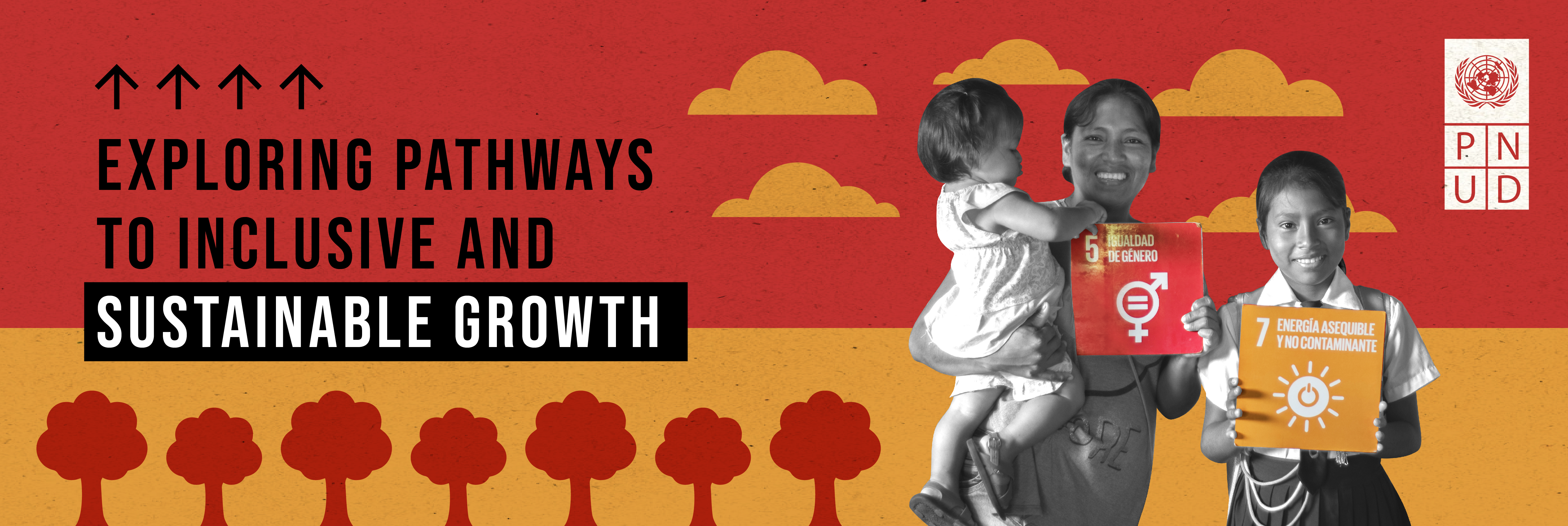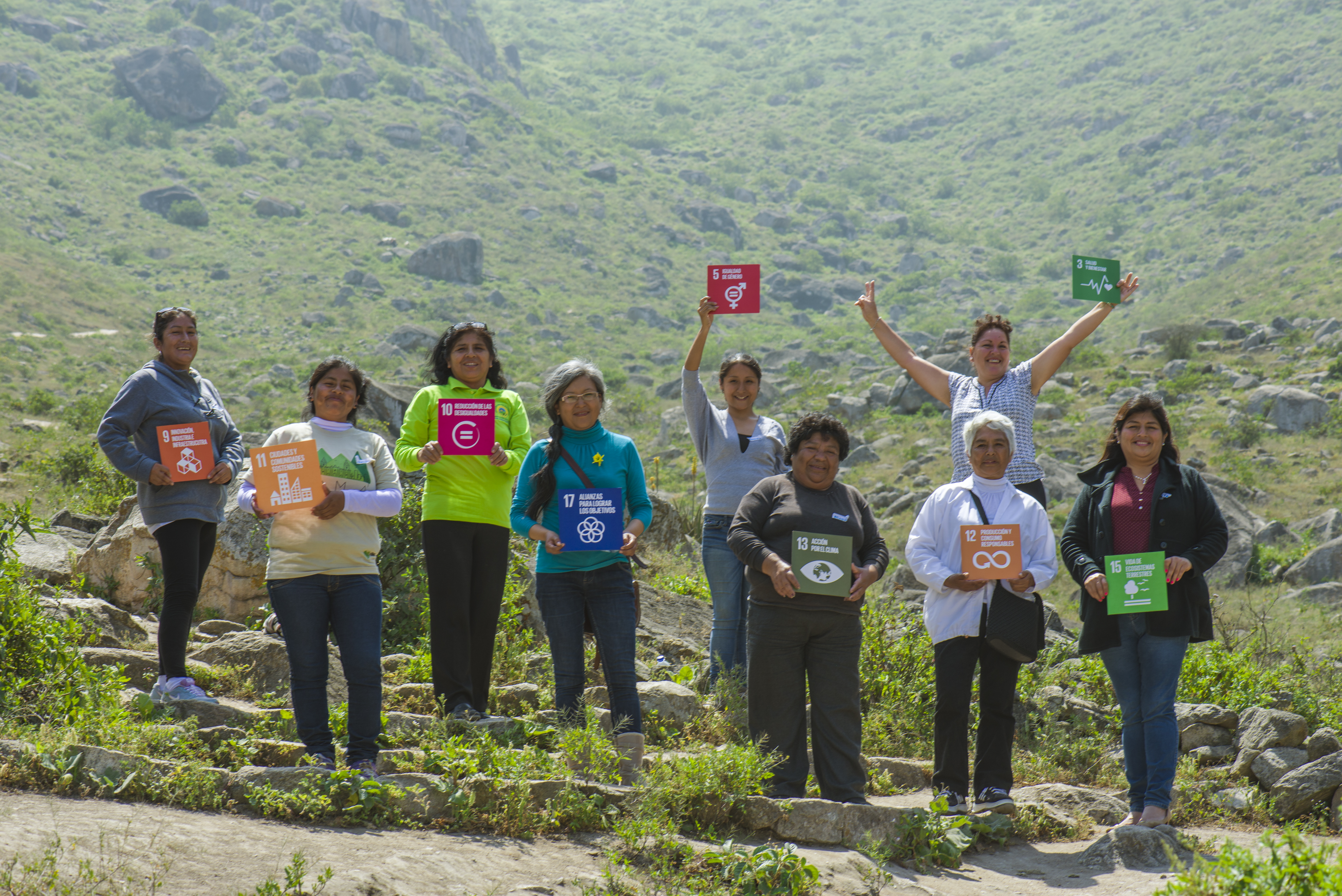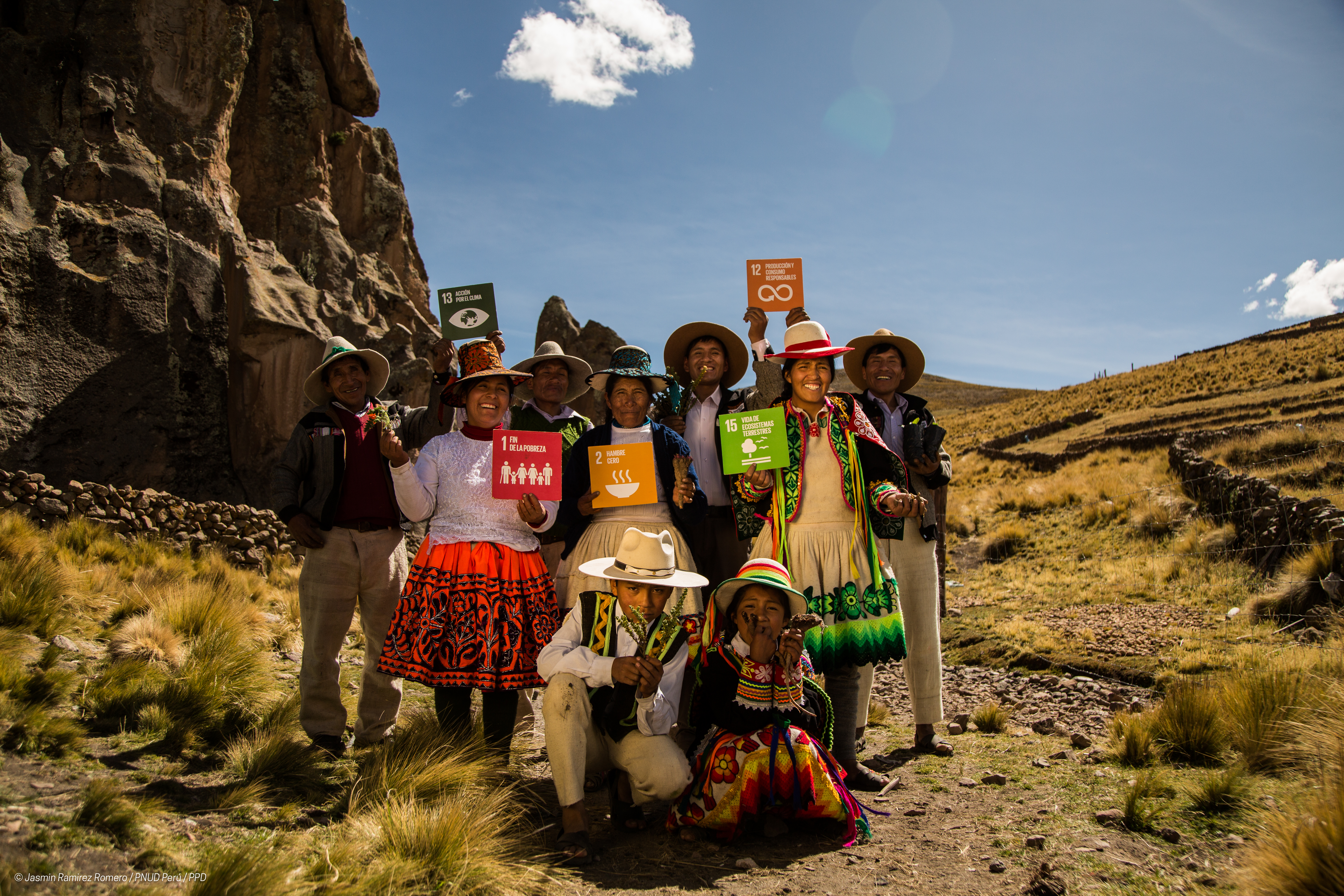By Carlos De Los Ríos, Economist at UNDP Peru
Exploring pathways to inclusive and sustainable growth
18 de Septiembre de 2023

The global crisis unleashed by the COVID-19 pandemic has been compounded by other crises such as the war in Ukraine and the climate crisis, leaving us with a world with higher levels of poverty, inequality and food insecurity. Added to this is the intense pressure on natural resources and the accumulation of greenhouse gases that threaten the environmental sustainability of our planet. This scenario of socio-economic and environmental crisis raises the question of whether it is possible to find solutions that allow us to increase well-being and reduce inequalities through environmentally sustainable mechanisms.
After more than three consecutive years of crisis, many countries are trying to promote job creation and income generation by focusing their efforts on the economic growth they can achieve, which may be far from the growth they would like to achieve, a growth that is inclusive, environmentally sustainable and, in turn, allows significant productivity gains.
The 2030 Agenda proposes a framework that can help us meet these challenges. This agenda consists of a set of 17 Sustainable Development Goals (SDGs) that aim to "eradicate poverty, protect the planet and ensure prosperity for all". One of the great advantages of this framework is that the SDGs present us with a systemic vision for achieving well-being and prosperity in a sustainable way, in which all goals are interlinked and a change in one SDG necessarily affects others. In this context, UNDP has developed a set of tools to identify the policy mix that has the greatest potential to accelerate the exit from the crisis, while building new development alternatives based on inclusive and sustainable growth. The Integrated SDG Insights are built on intensive quantitative and qualitative data analysis, machine learning, interrelationship mapping and future scenario generation to produce a country-specific document with prioritized policy recommendations.
Integrated SDG Insights has four key components. The first seeks to identify the challenges and opportunities for economic growth, the degree of dependence on carbon emissions, and the extent to which this growth translates into poverty reduction. The second seeks, on the one hand, to identify progress on SDG indicators and, on the other, to identify government priorities through an analysis of each country's key policy documents. The third component maps the synergies and trade-offs between the most relevant SDGs for each country and defines the policy options among those with the most significant multiplier effect, providing projections of possible scenarios. Finally, the last component conducts a fiscal analysis of the country to identify fiscal stimulus options to accelerate progress.
This tool has been used by more than 90 countries around the world in the run-up to the SDG Summit to generate information at the national, regional, and global levels, and to explore the key accelerators for achieving the SDGs.
Peru actively participated in the Integrated SDG Insights, after being one of the five countries that participated in the global pilot of the SDG Push, a tool with similar objectives that preceded the Integrated SDG Insights. The SDG Push is characterized by a high level of consultation with government representatives on policy priorities, which, through the use of general equilibrium models and micro-simulations, allowed the impact of these policies on different SDG indicators to be quantified.

Over the last two decades, Peru has experienced one of the highest growth rates in the region, which has allowed it to improve access to basic services and infrastructure and achieve a significant reduction in poverty. However, this growth has not made it possible to overcome the enormous territorial and inter-group disparities in the quantity and quality of basic public services, nor has it translated into greater accumulation of productive assets for the poorest segments of the population, as evidenced by the precariousness of the labour market.
The COVID-19 pandemic revealed the fragility of the social and economic progress achieved over the last two decades, and led to severe setbacks in education, health and household income. Indeed, the main impact of the pandemic on household income was transmitted through the labour market, where structural problems associated with high informality and low productivity became evident. Despite the government's rapid response to mitigate the effects of the loss of employment and income, these were limited in scope and resulted in an 11% contraction of the economy, a setback in the fight against poverty, which increased to levels similar to those of a decade ago and reached just over 9 million Peruvians, further exacerbating the enormous social and economic inequalities in the country.
The pandemic has been followed by other crises, both internal (political crisis) and external (El Niño phenomenon, inflation), which have created a scenario of uncertainty for which families living in poverty and vulnerability do not have the necessary resources and capacities. Moreover, in the short term, the growth cycle of our economy is expected to be moderate, well below pre-pandemic levels, which limits the space for public policies to achieve changes in the economy. In this sense, both the Integrated SDG Insights and the SDG Push show us a set of public policies that will allow us not only to recover from the strong impact of the pandemic, but also to build a more resilient future for all Peruvians, with no one left behind.

The results of this process suggest the following priority objectives based on the SDG indicators, characterized by their high multiplier effect, which will allow us to emerge from the crisis and accelerate the achievement of the SDGs:
1. Reduce poverty and strengthen the resilience of poor and vulnerable households (SDG 1.5). One of the ways to reduce poverty in the medium and long term is to increase public investment in the provision of basic infrastructure - especially telecommunications, energy and transport - to improve access to health, education and markets for goods, services and factors (employment).
2. Achieve universal health coverage (SDG 3.8) through increased public investment in infrastructure that enables quality health services for all, especially in areas with lower density of health centres. The multiplier effect of health, especially for children, will improve educational outcomes and productivity levels, reduce poverty and reduce inequalities.
3. Improve the quality of education (SDGs 4.1, 4.2), through increased public investment in infrastructure and educational connectivity, as well as in improving the quality of teachers, with a correlation to greater investment that allows for an increase in labour demand. Although investments in education have a medium-term impact on various indicators, they are not efficient if they do not generate sufficient demand to absorb the human capital being trained.
4. Achieve productive and quality employment for all, including youth, women and persons with disabilities (SDG 8.5). Simulations show that investments in basic infrastructure (telecommunications, energy and transport) improve the labour market (less underemployment and perhaps less informality) through improved connectivity and access to markets. The synergistic effects of this type of investment enhance the impact of investments in health and education by facilitating accessibility.
5. Promote inclusive industrialization with minimal environmental impact (SDG 9.2, 9.4). Policies that promote industrialization have a high impact on job creation and formalization of the labour market, while promoting various labour-intensive sectors such as agriculture and livestock (agro-industries).
6. Develop transparent, effective and accountable institutions (SDG 16.6). It is precisely this intervention that has the greatest multiplier effect on most of the SDGs. Institutions need to be strengthened so that they can ensure the delivery of quality goods and services to the most vulnerable populations. Improvements in institutional efficiency have an important impact on productivity by improving the quality of public spending.
The SDG Push recommendations call for focusing public investment on strategic sectors such as health, education, and sustainable infrastructure, growing at 6.7% per year, and promoting greater efficiency in public spending. This shift in public investment strategy will enable important social and economic outcomes far beyond current expectations: it would increase economic growth by an additional 0.7 percentage points, while reducing youth unemployment by nearly 12%, significantly reducing poverty to 17% by 2030, virtually eliminating child malnutrition, and improving the quality of education, including doubling the percentage of second graders with a satisfactory level in math tests.

The multiple crises we have experienced are forcing us to look for new forms of growth and different strategies to address the enormous environmental, social and economic challenges we face as a country. To quote Achim Steiner, UNDP Administrator, "Resilience, well-being and sustainability are three fundamental pillars of human development. The SDGs are the catalysts that enable inclusive growth with a low carbon footprint."

 Locations
Locations